Organizational Model for Enterprise is one of the TOGAF deliverables you can create with the TOGAF software.
In order for an architecture framework to be used successfully, it must be supported by the correct organization, roles, and responsibilities within the enterprise. Of particular importance is the definition of boundaries between different enterprise architecture practitioners and the governance relationships that span across these boundaries.
Step 1: Scope the Enterprise Organizations Impacted
Identify impacted organization units
This is the first step of the first activity of the Preliminary phase. We know that an organization is going to establish an enterprise architecture for anticipating business transformation. In this step, you are going to identify the organization units that will be affected by the architectural changes, and to what extent they will be impacted.
In this step, you are going to identify the following:
- Core impacted units: The most affected and achieve the most value from the work.
- Soft impacted units: Change may affect their capability and work with core units but are otherwise not directly affected.
- Extended impacted units: Outside of the scoped enterprise and will be affected in their own enterprise architecture.
- Impacted communities: Will be affected and are in groups of communities.
Draw an ArchiMate Diagram to model the impacted units. Indicate the level of impact by applying different color codes on the units. The color legend at the bottom right of the diagram is there to help.
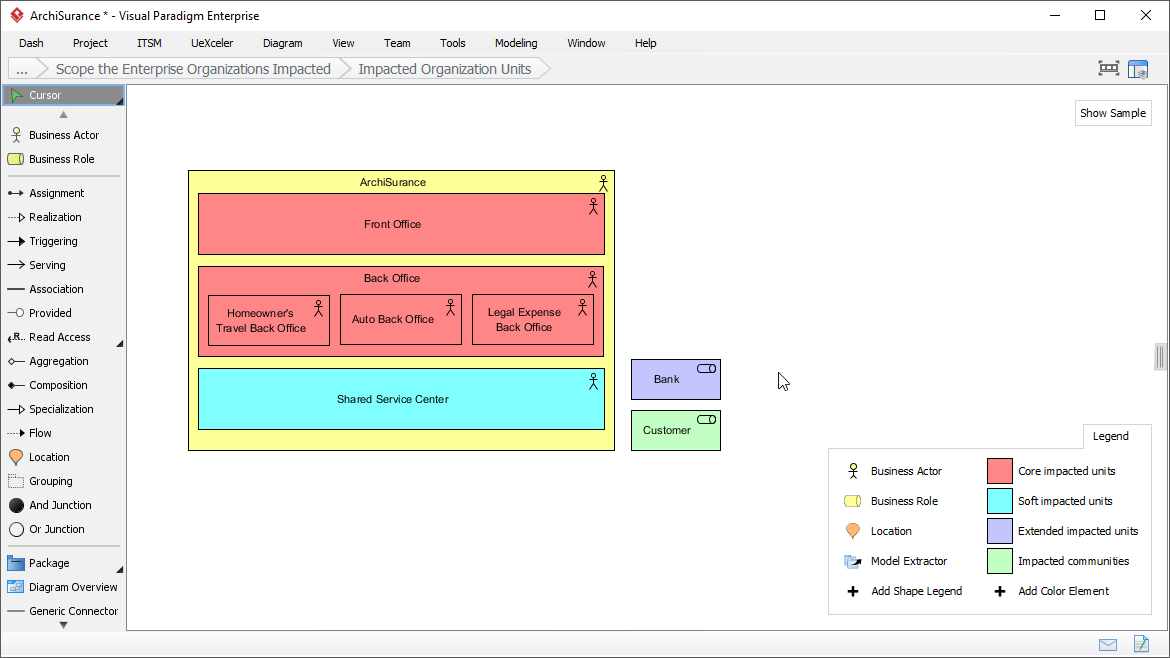
Describe the impact on each unit
The interests of different impacted organization units may be positively affected or negatively affected depending on the execution or completion of the project. Describe the kind and level of impact the changes will have on each impacted unit.
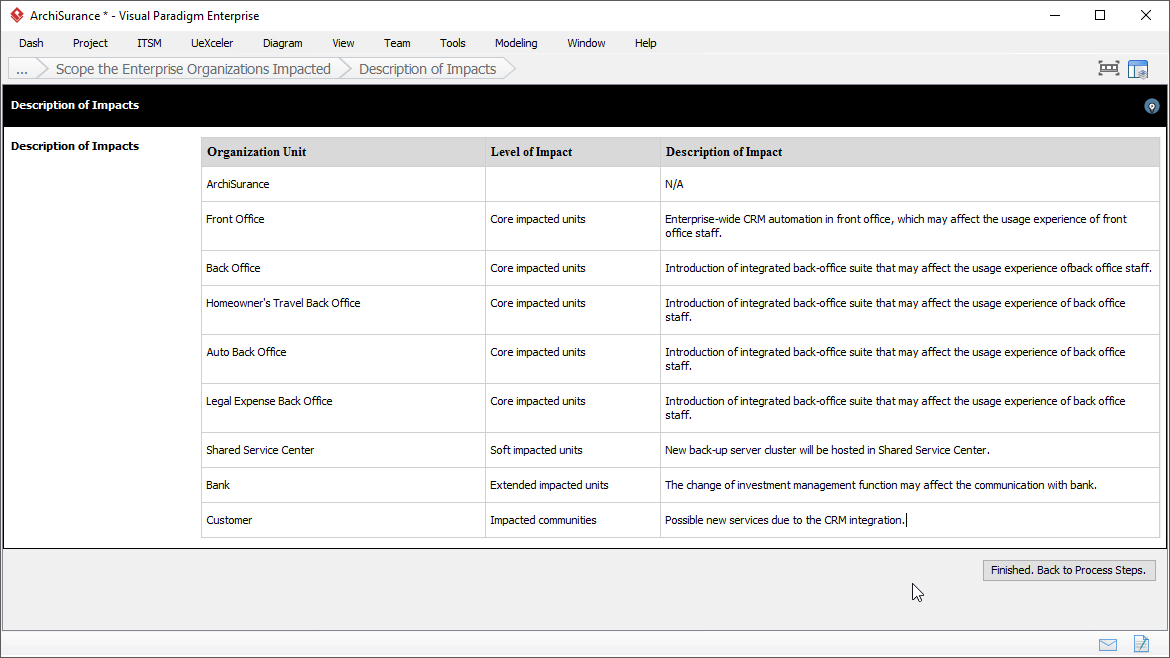
Step 2: Perform Enterprise Architecture Maturity Assessment
Complete the maturity chart for architecture capabilities
Assess the ability of an enterprise to exercise different capabilities by performing an Architecture Maturity Assessment. Here you are required to develop a maturity chart. A good enterprise architecture maturity chart covers the characteristics necessary to develop and consume enterprise architecture, known as maturity factors. You should identify the factors, and then give a score to each of the factor, representing its level of maturity. The scoring has to be done twice. One for the baseline maturity level, another one for target maturity level.
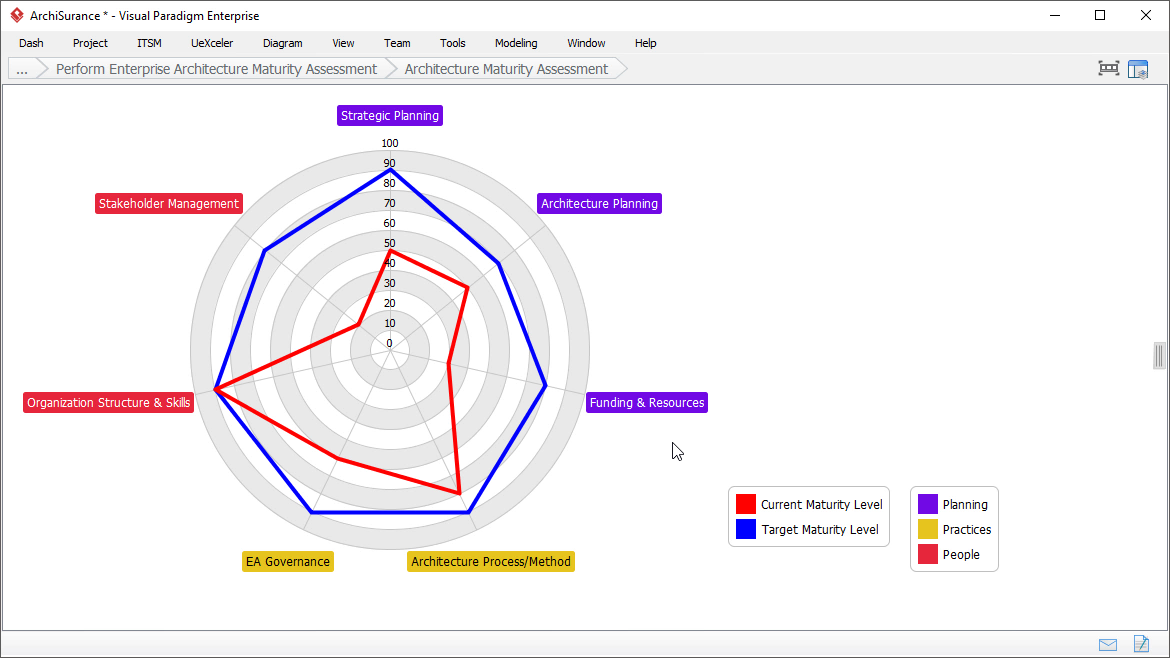
Complete the maturity chart that reflects the current and expected target maturity level of various maturity architecture capabilities. Here are some typical actions you will perform when creating a maturity chart.
- Add a (maturity) factor: Right click on the blank area next to the circle and then select Add Maturity Factor from the popup menu.
- Rename a factor: Double click on a maturity factor and enter a new name.
- Remove a factor: Right click on a maturity factor and select Delete from the popup menu.
- Give a score: Drag on the ring of maturity score to adjust the score, at the position that intersects with the maturity factor.
- Add a process area: Process area allows you to categorize factors, e.g. group capabilities ‘System Testing’ and ‘System Deployment’ into one category. To add a process area, right click on the label <no process area> and select Add Process Area… from the popup menu.
Specify how the maturity gap can be resolved/mitigated
Based on the result of Architecture Maturity Assessment, study the gaps between the current and target maturity level. Determine if any maturity gaps require resolution in order not to hinder any architecture work. State the resolution approach / mitigation strategy if required.
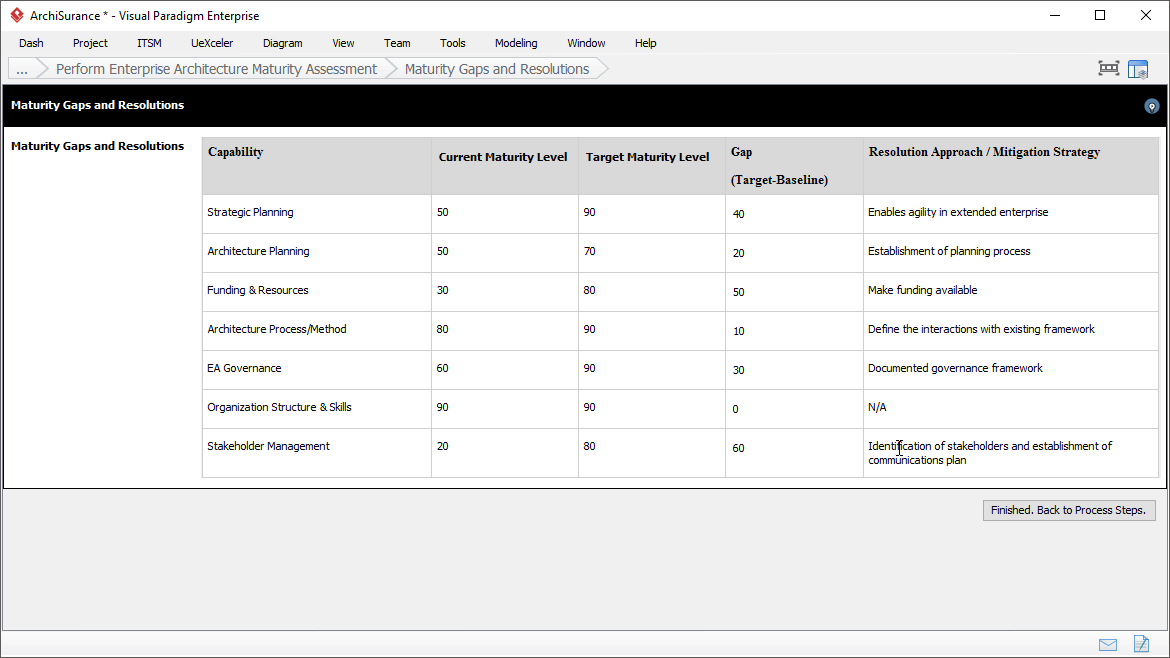
Step 3: Identify Key Roles and Responsibilities
List the key roles for Architecture Capability management and governance
Identify the key roles for architecture team(s), for enterprise Architecture Capability management and governance, with brief description of their roles and responsibilities on the project.
A typical architecture team will undertake the development of an enterprise architecture as described in TOGAF would comprise the following roles:
- Architecture Board Members
- Architecture Sponsor
- Architecture Manager
- Architects for:
- Program and/or Project Managers
- IT Designer

Fill-in the RACI chart that shows the involvement of different roles in major architecture activities
Use a RACI chart to show the involvement of different project roles in major architecture activities. A set of common activities have been added for you. You can add and remove activities as needed.
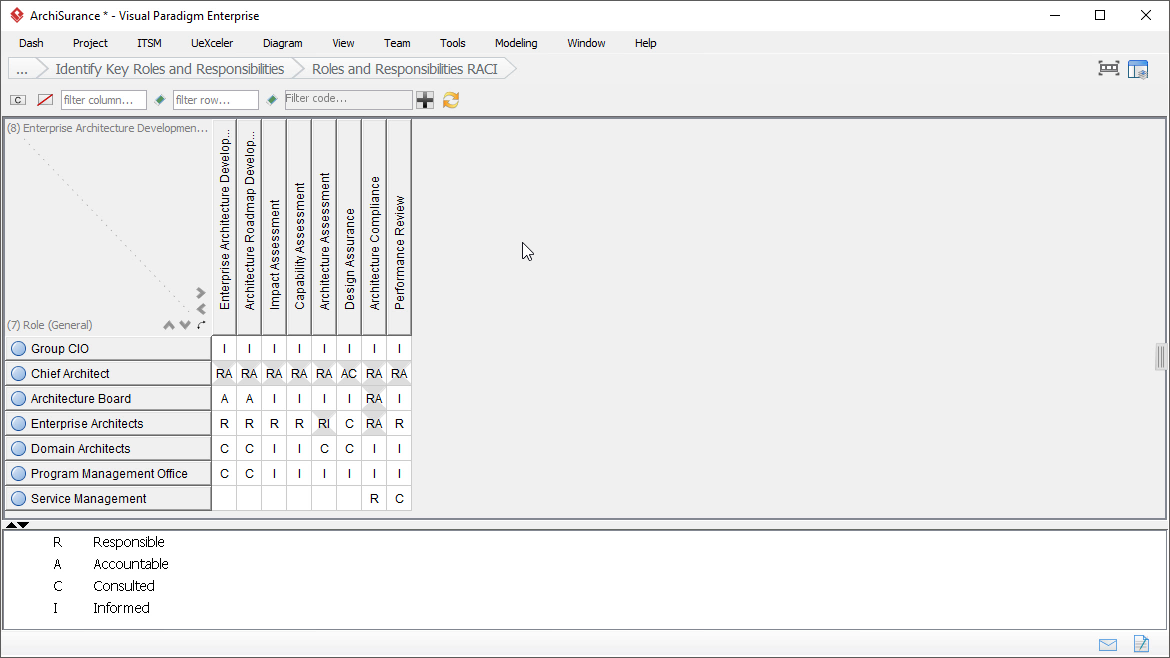
To assign a kind of responsibility (R/A/C/I), double click on the table cell to make a choice.
To add an activity column, right click on the adjacent column and select Add Item… from the popup menu. To remove an activity column, right click on it and then select Delete from the popup menu.
Step 4: Determine Constraints on Enterprise Architecture Work
List the organizational, budget and external constraints on enterprise architecture work
List the constraints on any architecture work to be taken. Constraints typically present fiscal limitations, physical limitations (for example, network capacity), time limitations (for example, completion before significant events such as the next annual meeting), or any other limitation you anticipate as a factor that affects the achievement of any architecture activities.
Define the following types of constraints. Upon finished defining a constraint, press Enter to create a new one.
- Organizational Constraints
- Budget and Financial Constraints
- External and Business Constraints
- Other Constraints
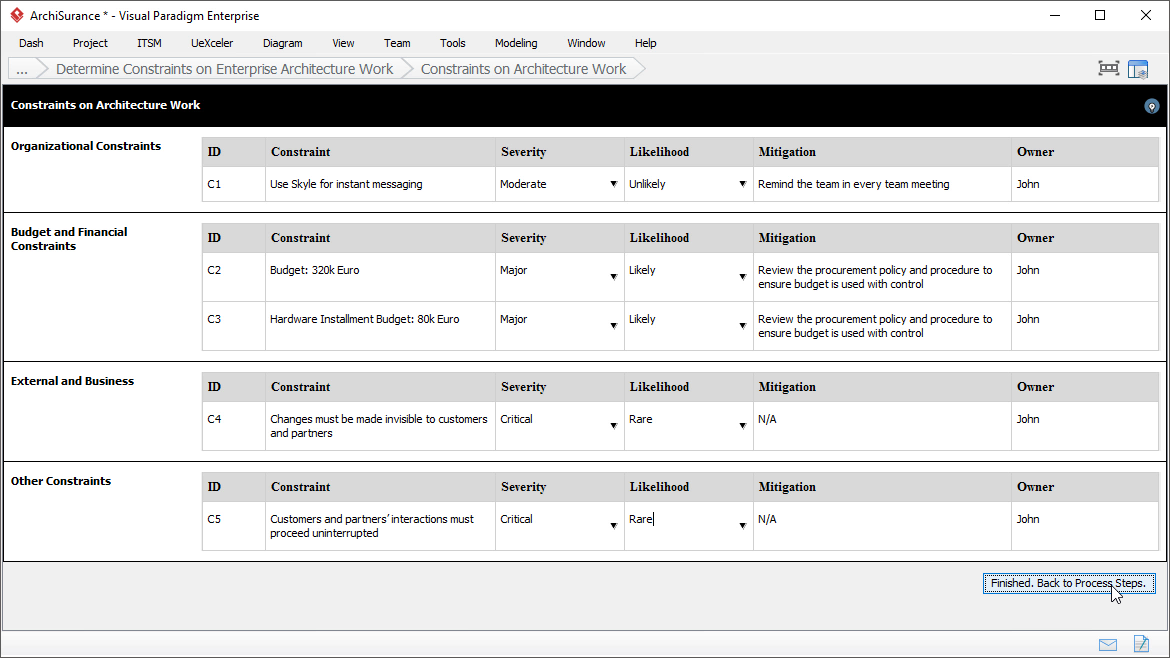
Step 5: Confirm Budget Requirements
Fill in the form of budget requirements
Assess budget requirements for enterprise architecture activities, and create budgetary plan based on the result of assessment. State the budget requirement items, which can be a phase or a known activity, the number of working days estimated, resources required, and the cost.

Step 6: Confirm Governance and Support Frameworks
Draw a diagram to show the governance structure and describe the support strategy
Model the governance structure of the Architecture Governance Framework, and describe the support strategy.
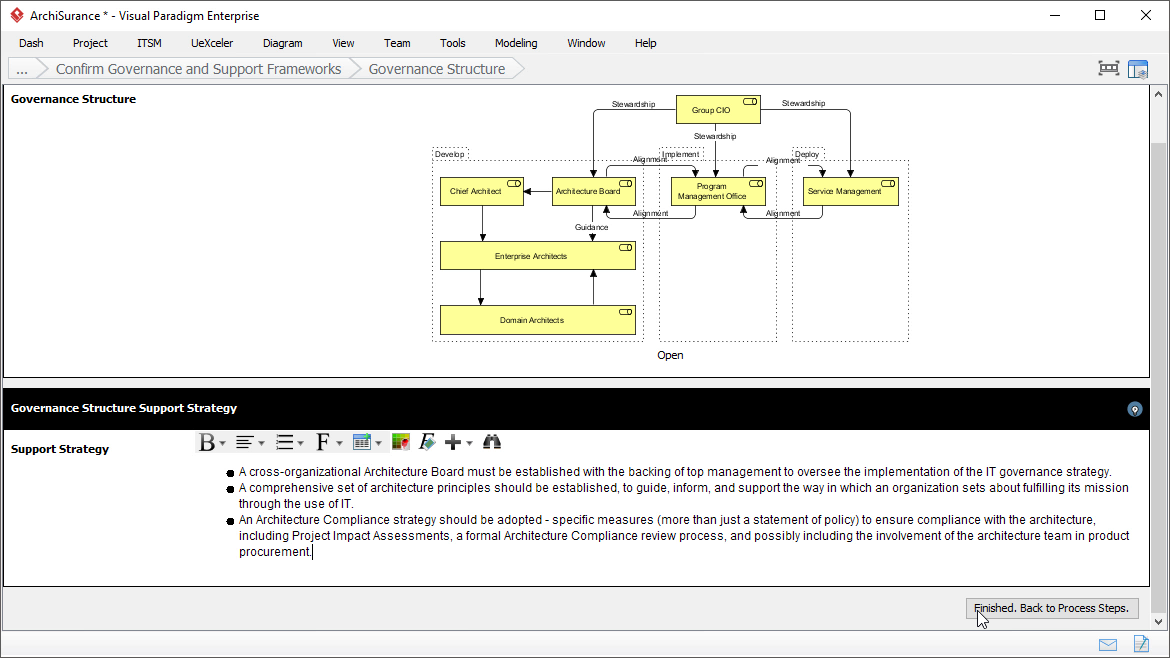
Architecture governance is the practice and orientation by which enterprise architectures and other architectures are managed and controlled at an enterprise-wide level.
Architecture governance typically does not operate in isolation, but within a hierarchy of governance structures, which, particularly in the larger enterprise, can include all of the following as distinct domains with their own disciplines and processes:
- Corporate governance
- Technology governance
- IT governance
- Architecture governance